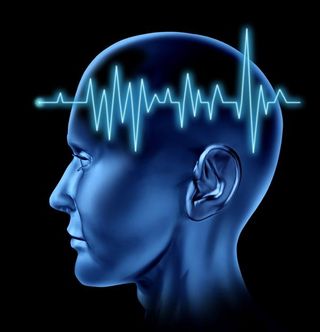Cerebral Palsy Drug May Offer Hope for Treatment

It may be possible to treat cerebral palsy after birth with a new drug designed to target specific cells in the brain, a new study in animals suggests.
In the study, rabbits with a cerebral palsy-like condition who were treated with the drug soon after birth showed substantial improvements in their ability move around, compared with rabbits not given the drug.
Cerebral palsy is a group of disorders characterized by problems with movement, including difficulties with maintaining balance or posture. It is caused by injury to the brain sustained either in the womb, shortly after birth, or within the first years of life. It is a lifelong disorder for which there is currently no cure.
The new findings suggest that "there appears to be a window of opportunity for treatment, even after birth," said study researcher Dr. Sujatha Kannan, of the Eunice Kennedy Shriver National Institute of Child Health and Human Development (NICHD) in Detroit.
However, much more work is needed before researchers will know if the findings apply to people. And the researchers still don't know whether the improvements seen in the rabbits in the study will last over the long term.
The study is published in the April 18 issue of the journal Science Translational Medicine.
Targeting brain cells
Sign up for the Live Science daily newsletter now
Get the world’s most fascinating discoveries delivered straight to your inbox.
About 1 in 300 children in the United States has cerebral palsy, according to the Centers for Disease Control and Prevention.
Cerebral palsy has a number of causes, and can manifest itself in different ways. One risk factor is bacterial infection within the womb. In response to the infection, cells in the baby's brain called microglia and astrocytes trigger brain inflammation. An exaggerated inflammatory response can kill brain cells, leading to damage that will ultimately manifest as cerebral palsy. However, the condition is usually not diagnosed until age 2 or 3, around the time the child begins to walk.
The researchers hypothesized that if they could lower the brain's inflammatory response, which can go on for months, they might be able to improve the motor symptoms of the condition.
To get anti-inflammatory drugs to the right spot in the brain, the researchers attached the drugs to nanomolecules designed to shuttle the drugs across the blood-brain barrier and target the microglia and astrocyte cells.
The researchers administered the drug when the rabbits were one day old. By day five, the rabbits had significant improvements in their ability to control their movement and take steps — moving almost as well as healthy rabbits. In contrast, rabbits that were given a placebo, or given the drug not attached to the nanomolecules, showed no such improvements — frequently rolling on their backs rather than walking forward.
Improving other symptoms?
It's not clear whether the treatment could improve other symptoms of cerebral palsy, such as developmental delays. The treatment targets cells in the brain's white matter, while developmental delays occur as a result of damage to the brain's gray matter. The researchers did see improvements in the treated animals' gray and white matter, but more studies are needed to test for improvements in the rabbits' cognitive development.
The researchers said they suspect the sooner the treatment is given, the better the response will be. Currently, there are several ways to identify babies who would be candidates for the treatment.
If a baby is born prematurely as a result of infection in the mother, doctors can test the umbilical cord blood for markers of inflammation, said study researcherDr. Roberto Romero, also of the NICHD. In addition, scans of a baby's brain can reveal if the cells that trigger inflammation have been activated, Romero said.
Preventing one case of cerebral palsy has been estimated to save $1 million in economic costs, Dr. Sidhartha Tan, of the University of Chicago, wrote in a summary article accompanying the new study.
However, "more detailed toxicology studies need to be done to rule out potential side effects," Tan said.
Pass it on: A drug that reduces brain inflammation may be able to treat cerebral palsy after birth.
Follow MyHealthNewsDaily staff writer Rachael Rettner on Twitter @RachaelRettner. Find us on Facebook.

Rachael is a Live Science contributor, and was a former channel editor and senior writer for Live Science between 2010 and 2022. She has a master's degree in journalism from New York University's Science, Health and Environmental Reporting Program. She also holds a B.S. in molecular biology and an M.S. in biology from the University of California, San Diego. Her work has appeared in Scienceline, The Washington Post and Scientific American.
